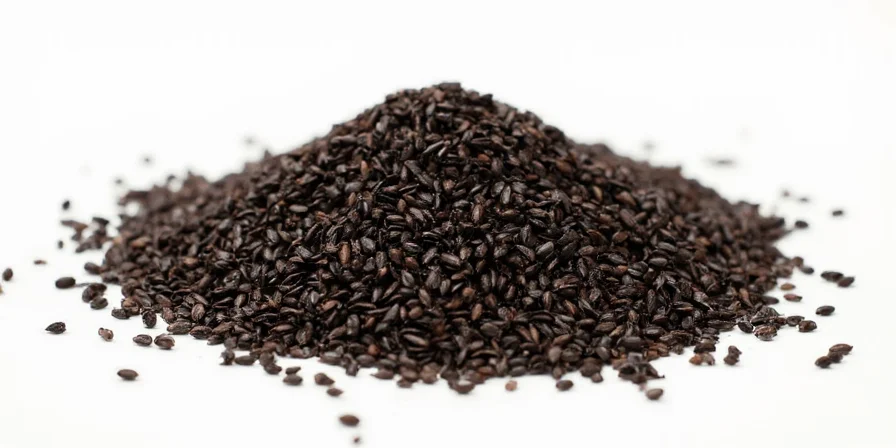What Are Nigella Seeds?
Nigella seeds, also known as Nigella sativa, black cumin, or kalonji, are tiny black seeds that originate from a flowering plant in the family Ranunculaceae. These seeds have been used for centuries in various cuisines and traditional medicine, making them an integral part of culinary and herbal practices worldwide. In this blog, we will explore the rich history, culinary uses, health benefits, and much more about nigella seeds.
A Brief History of Nigella Seeds
Nigella seeds have a storied past, dating back to ancient civilizations. They are mentioned in historical texts, including the Bible and the Quran, highlighting their significance in different cultures. Ancient Egyptians used these seeds for both culinary and medicinal purposes, and they even placed them in tombs to accompany the deceased into the afterlife.
Origins and Cultivation
The nigella plant is native to South and Southwest Asia, but it is now cultivated in various parts of the world, including the Mediterranean region, Eastern Europe, and parts of Africa. The plant thrives in well-drained soil and is typically grown in temperate climates. The seeds are harvested once the flowers bloom and the seed pods turn brown, usually in late summer.
Culinary Uses of Nigella Seeds
Nigella seeds are celebrated for their unique flavor profile, which is often described as a blend of onion, black pepper, and oregano. Their culinary versatility makes them a favorite among chefs and home cooks alike. Here are some popular ways to incorporate nigella seeds into your cooking:
- Baking: Nigella seeds can be sprinkled on bread and pastry dough before baking, adding a delightful crunch and flavor.
- Curries and Stews: Incorporate nigella seeds into curries and stews to enhance the dish’s overall flavor.
- Pickles: These seeds are often used in pickling spices, giving a distinct taste to various pickled vegetables.
- Salads: Add nigella seeds to salads for an interesting texture and flavor contrast.
- Rice Dishes: Sprinkle nigella seeds over rice dishes for added aroma and visual appeal.
Popular Dishes Featuring Nigella Seeds
Here are a few delicious dishes that highlight the use of nigella seeds:
| Dish | Description |
|---|---|
| Naan Bread | A popular Indian flatbread topped with nigella seeds for flavor and texture. |
| Chickpea Curry | A hearty dish where nigella seeds complement the spices and legumes. |
| Turkish Simit | A sesame-covered bread with a sprinkling of nigella seeds for added depth. |
Health Benefits of Nigella Seeds
Nigella seeds are not just flavorful; they also offer a plethora of health benefits. Traditionally, they have been used in herbal medicine for their therapeutic properties. Let’s delve into the various health benefits associated with these tiny seeds:
1. Antioxidant Properties
Nigella seeds are rich in antioxidants, which help combat oxidative stress in the body. This can lead to various health benefits, including reduced inflammation and a lower risk of chronic diseases.
2. Anti-Inflammatory Effects
Studies have shown that nigella seeds possess anti-inflammatory properties, making them useful in managing conditions like arthritis and asthma.
3. Immune System Support
The seeds may help strengthen the immune system, promoting overall health and wellness.
4. Digestive Health
Nigella seeds are known to aid digestion, alleviate bloating, and improve gut health.
5. Blood Sugar Regulation
Preliminary research suggests that nigella seeds may help regulate blood sugar levels, making them potentially beneficial for individuals with diabetes.
How to Use Nigella Seeds
Using nigella seeds in your cooking is simple. They can be used whole or ground, depending on your preference and the dish you are preparing. Here are some tips for using nigella seeds effectively:
- Whole Seeds: Use whole nigella seeds to sprinkle on top of breads, salads, or rice dishes.
- Ground Seeds: Grind nigella seeds to incorporate them into spice blends, marinades, or sauces.
- Infused Oil: Create a flavored oil by infusing nigella seeds in olive oil, which can be drizzled over dishes for added flavor.
Storing Nigella Seeds
To maintain the freshness and flavor of nigella seeds, it is essential to store them properly. Here are some storage tips:
- Store in an airtight container to protect from moisture and light.
- Keep in a cool, dark place, such as a pantry or spice cabinet.
- For longer shelf life, consider refrigerating or freezing the seeds.
Where to Buy Nigella Seeds
Nigella seeds can be found in various locations, including:
- Health food stores
- Asian grocery stores
- Online retailers
Conclusion
In conclusion, nigella seeds are a remarkable spice with a rich history and numerous culinary and health benefits. Their unique flavor and versatility make them an excellent addition to a variety of dishes, while their therapeutic properties are gaining recognition in the health community. Whether you’re a seasoned chef or a curious home cook, incorporating nigella seeds into your culinary repertoire can elevate your dishes and contribute to your overall wellness.
So, the next time you’re looking to add a little something special to your meals, consider reaching for nigella seeds!











 浙公网安备
33010002000092号
浙公网安备
33010002000092号 浙B2-20120091-4
浙B2-20120091-4